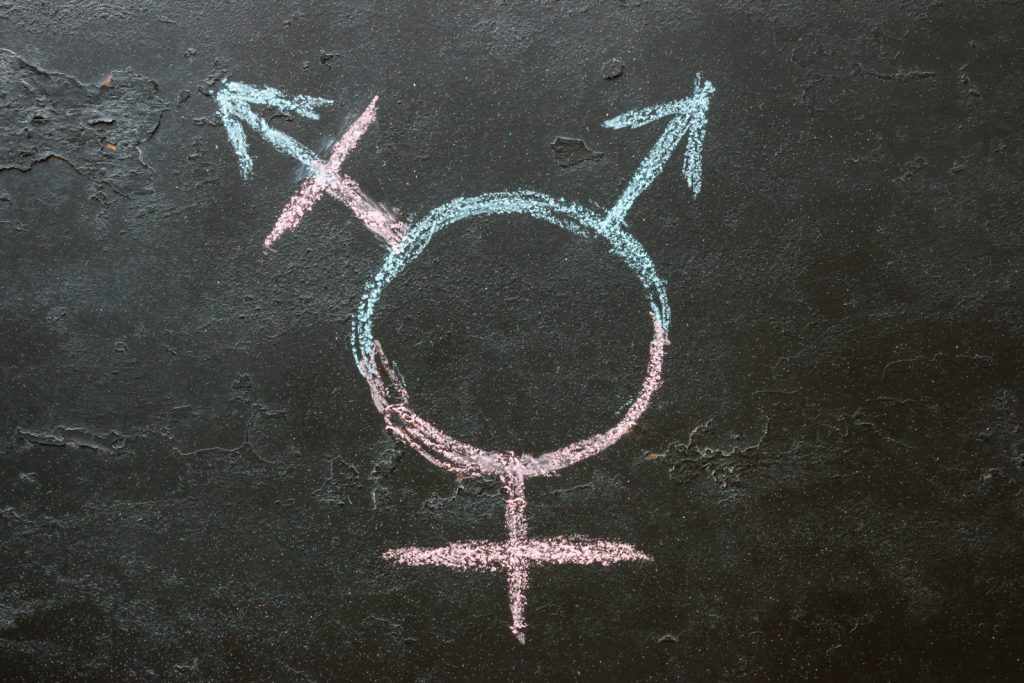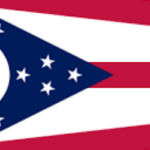Everyone knows that the biological process of maturation, puberty, differs for males and females. It’s nonsense to talk about puberty as if the sex of the person going through puberty is irrelevant.
But nonsense is what the activists at Gender Spectrum are peddling in their new publication, entitled “Principles of Gender-Inclusive Puberty and Health Education (‘Gender-Inclusive Puberty’).” It’s fake science, designed to further the LGBTQ agenda of Gender Spectrum and the six activist organizations behind the document: Planned Parenthood, Sexuality Information and Education Council of the United States (SIECUS), Advocates for Youth, Answer, GLSEN, and the Human Rights Campaign.
“Gender-inclusive puberty education” is an invented term that conceals ideological hokum under language vaguely suggestive of fairness and science. It’s an activist-driven maneuver to embed the gender-identity construct into the minds of impressionable children—all children—under the guise of health education. The real goal is to normalize transgender and non-binary identities and the drastic medical and surgical interventions that “affirm” them.
If the so-called Equality Act becomes federal law, we can expect gender-inclusive puberty education to be taught in every public school in the country, under the guise of protecting trans students from discrimination. Even if the act fails, however, gender-inclusive puberty education won’t vanish: Activists already have embarked on classroom, district, and state efforts to bring fake science into classrooms quite openly, creating “queer- and trans-inclusive curriculum and classroom[s].”
They are leveraging the political power of big-time endorsers to pressure school districts into adopting this approach. Gender Spectrum cleverly promotes its document not as a “curriculum” (which typically requires approval) but as a set of “principles” that any teacher can use to transform existing health curricula into an LGBTQ-friendly experience.
What is gender-inclusive puberty education? It consists of five principles.
1. Gender Literacy for All
Gender activists insist that all children need a foundation in “gender literacy.” Imagine that. For thousands of years, pubescent teens the world over somehow managed to pass through puberty without being “gender literate.” Not so for today’s kids, who needgender literacy to grasp “the complexity of gender” since “gender is about more than bodies.”
At this point, one might reasonably ask, “What exactly is ‘gender’?” The Gender Spectrum document never defines it, noting only that “the vocabulary of gender continues to evolve and there is not universal agreement about the definitions of many terms.” Translation: Gender means what activists want it to mean.
Gender Spectrum suggests teachers impart gender literacy by telling their students: “We don’t know what someone’s gender is just by looking at them,” and “While many of us thought that genitals define our gender, our gender is richer and more complex than that.” The gender-literate child learns that “a person’s body, gender expression, and gender identity” each exist “on a spectrum,” and that gender and sexual orientation are different but “related aspects of a person’s identity.”
Teachers will portray “multiple non-binary gender identities” as normal, embraced “historically” by “many cultures across the globe.” (Historically? What, since last Tuesday?) Let’s be blunt: Gender literacy is code for gender indoctrination.
2. Bodies Follow Patterns, not Rules
Because trans activists repudiate the truth about our bodies—that human beings are either male or female, forever—they play words games and throw up linguistic smokescreens in order to manufacture doubt around basic biological facts. So it’s not surprising that the second principle of gender-inclusive puberty education rejects rules about bodies in favor of patterns, thus promoting the fiction of natural gender diversity.
Using scripted talking points, teachers reinforce the point that bodies need not conform to rules. They first highlight stereotypical “boy” or “girl” behaviors as patterns (not rules) of behavior, because stereotypes clearly don’t apply to everyone.
Next, they pivot from behaviors to bodies: Teachers present “intersex” conditions not as disorders of sexual development (in which the baby’s body, in utero, fails to develop properly as a male or female body) but as “natural” variations of sexed bodies. Ergo, human bodies reflect “tremendous physiological diversity that belies binary categories.” The pseudo-science of gender thus rejects the binary rule that babies must be either male or female.
Gender Spectrum suggests teachers explain it like this:
When a baby is born what’s the first question that often gets asked? Right—is it a boy or a girl? And how does that get decided? Right again—we look at their bodies. For example, if a baby has a penis they’re assigned the sex of male and it’s assumed they will identify as a boy. While that pattern is true for many people it is not true for everyone. For example, some people realize as they get older that the gender identity adults thought they were when they were born doesn’t fit who they know themselves to be. (Emphasis mine.)
Tossing aside the biological certainty of male and female, gender experts imagine that a person’s authentic identity emerges magically from a complex jumble of body parts, gender dimensions, and fluid feelings. No rules, just be who you are.
3. Puberty Happens to De-Sexed Body Parts
The third principle asserts that pubertal developmental is best described through a de-sexed lens. Teachers are taught to reference body parts and functions without acknowledging that the physiological changes of puberty are driven by the person’s biological sex. “On a basic level, this means describing the parts that different bodies come with (and their functions) as opposed to connecting those parts to a particular gender.”
The teacher might explain the “bodies, not people” approach like this:
For the most part when I talk about bodies I’ll talk about bodies with a penis and testicles or bodies with a vulva and ovaries. You might wonder why I’m doing this instead of just saying male bodies or female bodies. As we’ve discussed, there aren’t just two kinds of bodies. I also want everyone to get used to using accurate language for body parts and functions without assuming that there are only two sexes and that everyone within a particular sex is the same.(Emphasis mine.)
Without any trace of irony, the script concludes with, “It’s important to be able to communicate about our bodies in accurate ways.” The gender-inclusive script recommends using anatomical diagrams of human reproduction scrubbed of the words male and female. Explanations about the functions of specific body parts are detached from the sexual identity of the actual person going through puberty. Gender Spectrum tells teachers to point to the:
vagina and ovaries and simply say, ‘For those who have ovaries, the pituitary glands and ovaries interact to start menstruation.’ When looking at a diagram of a body with a penis and testicles, teachers may refer to the testicles and note that ‘Sperm cells are produced daily once puberty has begun.’
Here’s the problem: Gender-inclusive puberty education is fake science. It omits fundamental scientific facts, including that “puberty is by essence sexually dimorphic” and “puberty and sex critically influence brain maturation in adolescence.” Students are radically shortchanged when the reality of biological sex is excised from discussions about puberty: the real truth about who they are is hidden from them.
Why does gender-inclusive puberty education omit such fundamental truths? Because to succeed, the transgender agenda must brainwash our children into believing that their bodies have no meaning and can be modified at will. “Who they are” depends on subjective feelings.
4. Many Pathways to Adult Bodies
The fourth principle of gender-inclusive puberty aims to normalize transgender and non-binary identities and to frame the pursuit of cross-sex hormones and mutilating surgeries as perfectly normal paths to an “adult body.” Gender Spectrum asserts that “human bodies” reflect “tremendous diversity…[in] the way they grow and develop into adulthood.” The educator’s task is to “convey the range of experience people have in this maturation process” in order to “help every student see their path within a norm, including those that may require some form of medical or surgical support. Acknowledging the multiple pathways to an adult body is essential.”
Instructors introduce the idea of “multiple pathways to adult bodies” first by emphasizing the “natural variations” in physical development. Second, they tell students it’s not uncommon for young people to need “medical support” during puberty. The “big lie” falsely equates medical interventions to fix problems related to puberty (e.g., using puberty blockers to arrest premature puberty) with medical interventions to suppress normal pubertal development in “transgender young people”—a prelude to using cross-sex hormones to spur “pubertal development…consistent with their gender.”
Gender Spectrum suggests teachers explain that:
Puberty is the time of life when a child’s body begins developing into adult form. It looks very different for each person … Some young people will start puberty at such a young age that they may be given medication to slow down the process. Puberty can also be delayed. Some young people will experience puberty in a way that does not feel right for their gender and medication can be used to pause that process … Each body is different. (Emphasis mine.)
From the gender-inclusive perspective, a teen girl who takes puberty blockers and then testosterone is receiving “medical support” that affirms her chosen “pathway to an adult (masculine) body.” In truth, the gender-inclusive approach obscures biological reality by pretending that puberty has nothing to do with sexual identity. Worse, it downplays the radical nature of puberty-disrupting interventions that purport to fulfill trans desires for “gender congruence.”
5. Sterilizing Teens Is No Big Deal
Gender-inclusive puberty education not only aims to disrupt “cis-normative” and “hetero-normative” narratives about identity and sexuality but also to undermine the natural family, a married mother and father with children, by characterizing it as merely one “narrative of family building.” Gender Spectrum cautions teachers not to imply that “the sole reason bodies are changing is to produce children and create families” or that children are “born because a man and a woman have sexual intercourse in order to fertilize an egg.”
Instead, teachers should help students “embrace the array of family building options” including “egg donors and sperm donors, blended families, surrogacy, and adoption.” Why? Because it’s “critical” for “students whose sexuality or gender may leave them concerned that parenthood won’t be an option” to realize they “will have many options for creating their own family.”
In short, trans activists want confused kids to feel good about taking hormones that will render them infertile—before they are legally old enough to order a beer—because “just as there are many pathways to your adult body, there are also lots of ways of becoming a parent.”
Coming to a School Near You
Parents (and voters) need to face facts: Gender-inclusive puberty education is coming to a public school near you, if it hasn’t already. Before publishing this resource, Gender Spectrum promoted the concept in plenty of schools.
For example, the Sex Education Program Manager for Oakland, California, public schools praised Gender Spectrum’s training for teaching Oakland’s middle school science teachers to “talk about bodies without using gender.” Soon all schools in California will follow suit: the California Board of Education just approved the framework for statewide LGBTQ-inclusive sex education.
The public education establishment and the School-Based Health Alliance (networks of school-based health clinics) are all in for “gender-inclusive” puberty education. They are solidly backed by progressive heavy-hitters like the Southern Poverty Law Center, Planned Parenthood, and the Human Rights Campaign Foundation.
Public school parents may still have a fighting chance to push back against gender indoctrination masquerading as science, as long as this issue is contested locally—although the odds are not good. But if the so-called Equality Act passes, the odds that parents will be able to shield their children from LGBTQ indoctrination are exactly zero.
[Note: unless indicated otherwise, quotes are from Gender Spectrum’s “Principles of Gender-Inclusive Puberty and Health Education.”]
Mary Rice Hasson, J.D., is the Kate O’Beirne Fellow at the Ethics and Public Policy Center.
Most Read
EPPC BRIEFLY
Sign up to receive EPPC's biweekly e-newsletter of selected publications, news, and events.
Upcoming Event |
Roger Scruton: America
SEARCH
Your support impacts the debate on critical issues of public policy.
Donate todayMore in Catholic Womens Forum













